10 Must-Try Indian Curry Types (With Tips for Your Kitchen)
Are you ready to spice up your dinner game with a culinary adventure? Look no further than the vibrant and aromatic world of Indian curries! From creamy coconut-infused kormas to fiery vindaloos, each curry type is a flavor-packed journey into India’s rich and diverse food culture.
Table of Contents
- Introduction: The Magic of Indian Curries
- Top 10 Indian Curry Types You Should Know
- Pro Tips for Cooking Curries at Home
- Curry Type Comparison Table
- Conclusion: Spice Up Your Life!
Introduction: The Magic of Indian Curries
If you’ve ever wondered why Indian cuisine seems so complex, it’s because every region in India has its own unique take on curry. Some are slow-cooked, some are tomato-based, others use yogurt or coconut milk — but all of them deliver unforgettable flavors that have stood the test of time.
Curry isn’t just one dish; it’s a whole family of recipes united by spices, cooking methods, and regional influences. Ready to dive into the delicious diversity of Indian curries?
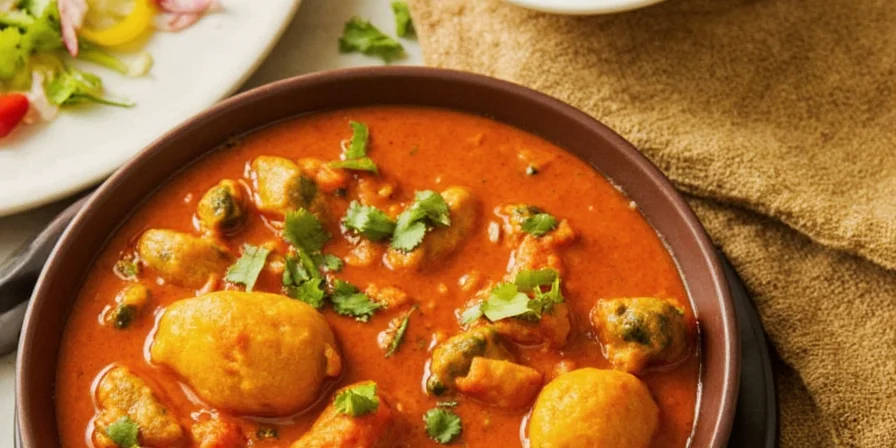
Top 10 Indian Curry Types You Should Know
1. Butter Chicken (Murgh Makhani)
Originating from Punjab, butter chicken is known for its rich, creamy tomato gravy infused with garam masala, fenugreek, and lots of butter (as the name suggests!). It’s usually made with marinated chicken cooked in a tandoor, then simmered in a sauce of tomatoes, cream, and spices.
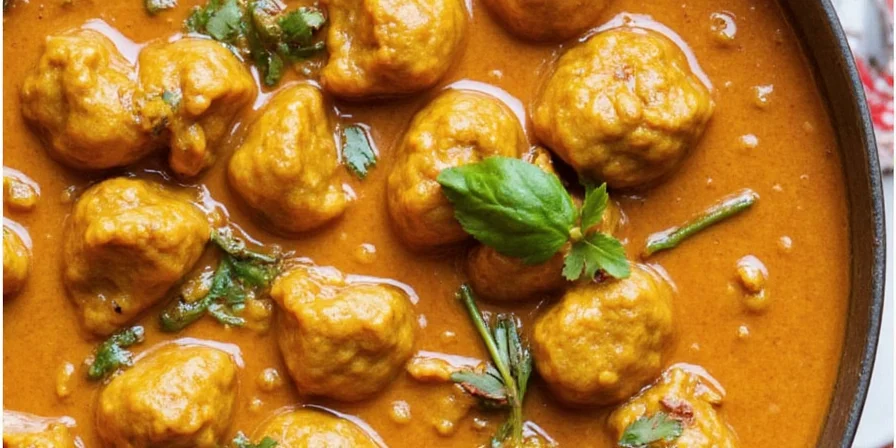
2. Rogan Josh
This Kashmiri classic gets its deep red color from Kashmiri chili powder and dried ginger. It’s typically made with lamb or goat and uses a base of yogurt and oil. The result? A deeply fragrant curry with a mild heat and melt-in-your-mouth tenderness.
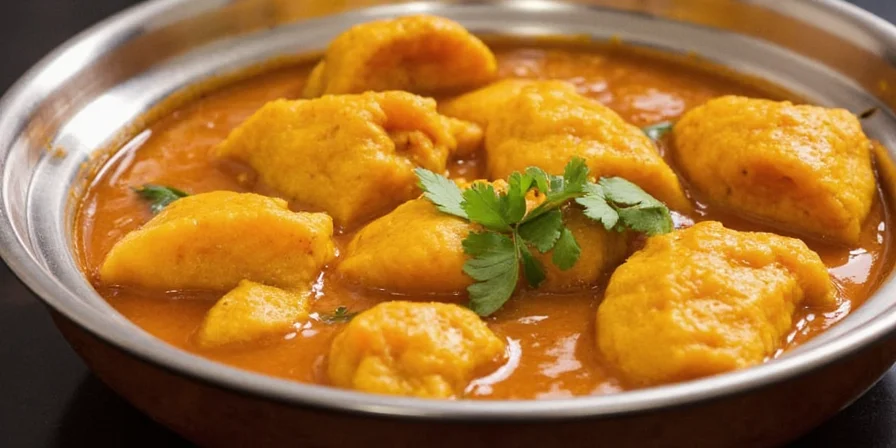
3. Vindaloo
Hailing from Goa, vindaloo is the ultimate spicy curry — originally inspired by Portuguese dishes using vinegar. Now, it’s famous for its fiery kick thanks to liberal amounts of red chilies, garlic, and black pepper. Traditionally made with pork, today it comes in many meat and veggie variations.
4. Korma
Korma is all about richness and subtle spice. Made with yogurt or cream, nuts, and dried fruits like raisins or apricots, it’s one of the milder Indian curries. Often used in Mughlai cuisine, it’s perfect for those who prefer creamy textures over intense heat.
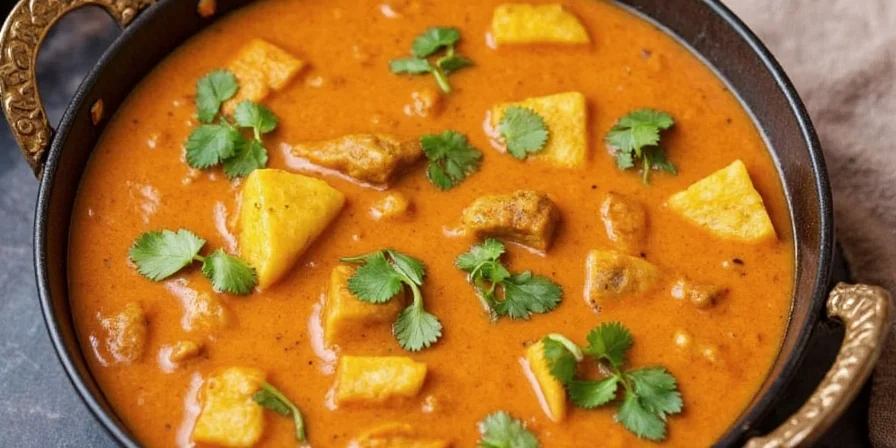
5. Chana Masala
A vegetarian favorite, chana masala features chickpeas simmered in a spiced tomato-onion gravy. Bursting with flavor from cumin, coriander, turmeric, and amchur (dry mango powder), this dish is hearty, healthy, and oh-so-satisfying.
6. Kadhi
From Rajasthan comes kadhi — a tangy yogurt-based curry often thickened with gram flour (besan). Usually served with pakoras (fried fritters) submerged in the curry, it’s a comforting dish that balances sour and spicy flavors beautifully.
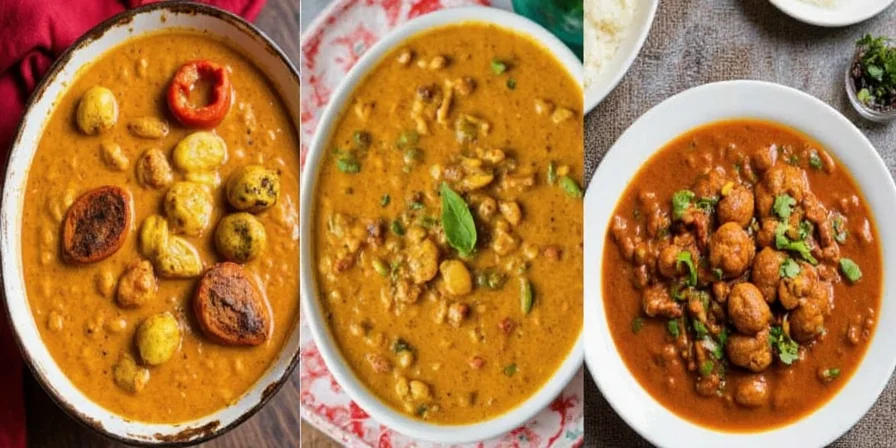
7. Dum Aloo
This North Indian dish stars baby potatoes slow-cooked in a spiced onion-tomato gravy. The ‘dum’ method refers to slow-cooking under a lid, allowing the spices to meld and infuse the potatoes thoroughly. It’s rich, earthy, and incredibly satisfying.
8. Malai Kofta
Think Indian-style meatballs — except these are made from paneer (Indian cottage cheese) and potatoes, fried, and then simmered in a rich, creamy tomato sauce. Ideal for vegetarians craving indulgence without meat.
9. Biryani
Technically not a curry, biryani deserves a spot here because it’s a masterpiece of layered flavors. Basmati rice, meat or veggies, saffron, and spices are cooked together to create an aromatic one-pot meal that’s popular across India. Each region has its own style — Hyderabad’s Hyderabadi Biryani being the most famous!
10. Mangalorean Curry
This South Indian gem is known for its bold use of coconut, tamarind, and curry leaves. Often made with seafood or chicken, Mangalorean curry delivers a tangy, slightly spicy flavor that pairs perfectly with appams or bread.
Pro Tips for Cooking Curries at Home
- Bloom your spices: Heat whole spices like cumin seeds, mustard seeds, and cloves in oil before adding other ingredients. This enhances their flavor dramatically.
- Use fresh herbs: Coriander leaves (cilantro) and curry leaves can make a huge difference in aroma and freshness.
- Taste as you go: Indian curries rely heavily on balancing flavors — sweet, salty, spicy, sour. Adjust as you cook!
- Don’t rush the process: Letting your curry simmer ensures all the flavors blend beautifully. Especially important for dishes like rogan josh or dum aloo.
- Stock up on pantry staples: Garam masala, turmeric, cumin powder, coriander powder, and ghee should always be in your kitchen arsenal.
Curry Type Comparison Table
| Curry Name | Main Ingredients | Flavor Profile | Heat Level | Region |
|---|---|---|---|---|
| Butter Chicken | Chicken, tomatoes, cream, butter | Creamy, aromatic | Mild | Punjab |
| Rogan Josh | Lamb, yogurt, Kashmiri chilies | Earthy, aromatic | Mild to Medium | Kashmir |
| Vindaloo | Meat, vinegar, garlic, chilies | Spicy, tangy | Very High | Goa |
| Korma | Nuts, cream, dried fruit | Creamy, nutty | Mild | Mughlai |
| Chana Masala | Chickpeas, onions, tomatoes | Hearty, tangy | Medium | North India |
| Kadhi | Yogurt, gram flour, pakoras | Tangy, savory | Low | Rajasthan |
| Dum Aloo | Potatoes, spices, tomatoes | Earthy, robust | Medium | North India |
| Malai Kofta | Potatoes, paneer, cream | Creamy, rich | Mild | North India |
| Biryani | Rice, meat/veg, saffron | Fragrant, layered | Varies | All over India |
| Mangalorean Curry | Coconut, tamarind, seafood | Tangy, spicy | High | Karnataka |
Conclusion: Spice Up Your Life!
Indian curries aren’t just meals — they’re celebrations of flavor, history, and tradition. Whether you're a seasoned pro or a curious beginner, there's a curry out there waiting for you to discover. With a little practice and a lot of love, you’ll soon be creating restaurant-worthy curries in your own kitchen.
So grab your spices, roll up your sleeves, and get ready to embark on a flavorful journey through the global spice traditions of India!










 浙公网安备
33010002000092号
浙公网安备
33010002000092号 浙B2-20120091-4
浙B2-20120091-4